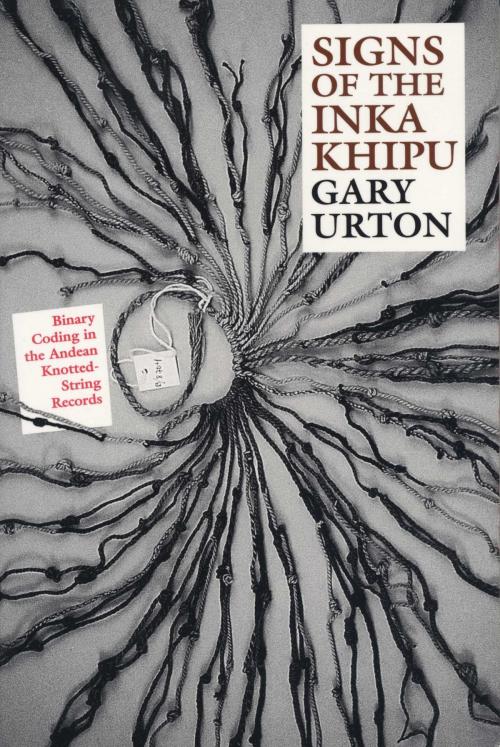Signs of the Inka Khipu
Binary Coding in the Andean Knotted-String Records
Nonfiction, Social & Cultural Studies, Social Science, Archaeology| Author: | Gary Urton | ISBN: | 9780292773752 |
| Publisher: | University of Texas Press | Publication: | March 6, 2009 |
| Imprint: | University of Texas Press | Language: | English |
| Author: | Gary Urton |
| ISBN: | 9780292773752 |
| Publisher: | University of Texas Press |
| Publication: | March 6, 2009 |
| Imprint: | University of Texas Press |
| Language: | English |
In an age when computers process immense amounts of information by the manipulation of sequences of 1s and 0s, it remains a frustrating mystery how prehistoric Inka recordkeepers encoded a tremendous variety and quantity of data using only knotted and dyed strings. Yet the comparison between computers and khipu may hold an important clue to deciphering the Inka records. In this book, Gary Urton sets forth a pathbreaking theory that the manipulation of fibers in the construction of khipu created physical features that constitute binary-coded sequences which store units of information in a system of binary recordkeeping that was used throughout the Inka empire.Urton begins his theory with the making of khipu, showing how at each step of the process binary, either/or choices were made. He then investigates the symbolic components of the binary coding system, the amount of information that could have been encoded, procedures that may have been used for reading the khipu, the nature of the khipu signs, and, finally, the nature of the khipu recording system itself—emphasizing relations of markedness and semantic coupling. This research constitutes a major step forward in building a unified theory of the khipu system of information storage and communication based on the sum total of construction features making up these extraordinary objects.
In an age when computers process immense amounts of information by the manipulation of sequences of 1s and 0s, it remains a frustrating mystery how prehistoric Inka recordkeepers encoded a tremendous variety and quantity of data using only knotted and dyed strings. Yet the comparison between computers and khipu may hold an important clue to deciphering the Inka records. In this book, Gary Urton sets forth a pathbreaking theory that the manipulation of fibers in the construction of khipu created physical features that constitute binary-coded sequences which store units of information in a system of binary recordkeeping that was used throughout the Inka empire.Urton begins his theory with the making of khipu, showing how at each step of the process binary, either/or choices were made. He then investigates the symbolic components of the binary coding system, the amount of information that could have been encoded, procedures that may have been used for reading the khipu, the nature of the khipu signs, and, finally, the nature of the khipu recording system itself—emphasizing relations of markedness and semantic coupling. This research constitutes a major step forward in building a unified theory of the khipu system of information storage and communication based on the sum total of construction features making up these extraordinary objects.















